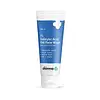What's inside
What's inside
 Key Ingredients
Key Ingredients

 Benefits
Benefits

 Concerns
Concerns

 Ingredients Side-by-side
Ingredients Side-by-side

Water
Skin ConditioningSodium C16 Olefin Sulfonate
EmulsifyingCocamidopropyl Betaine
CleansingGlycerin
HumectantCocamide Mea
EmulsifyingSodium Lactate
BufferingSalicylic Acid
MaskingSalix Alba Bark Extract
AstringentHamamelis Virginiana Extract
AntiseborrhoeicCoco-Glucoside
CleansingGlyceryl Oleate
EmollientPEG-120 Methyl Glucose Dioleate
EmulsifyingSodium Chloride
MaskingPhenoxyethanol
PreservativeTriethylene Glycol
MaskingDisodium EDTA
Water, Sodium C16 Olefin Sulfonate, Cocamidopropyl Betaine, Glycerin, Cocamide Mea, Sodium Lactate, Salicylic Acid, Salix Alba Bark Extract, Hamamelis Virginiana Extract, Coco-Glucoside, Glyceryl Oleate, PEG-120 Methyl Glucose Dioleate, Sodium Chloride, Phenoxyethanol, Triethylene Glycol, Disodium EDTA
Water
Skin ConditioningCocamidopropyl Betaine
CleansingCoco-Glucoside
CleansingSodium Lauroyl Sarcosinate
CleansingAcrylates Copolymer
Propylene Glycol
HumectantButylene Glycol
HumectantTriethanolamine
BufferingAcrylates Crosspolymer-4
Emulsion StabilisingSalicylic Acid
MaskingErythritol
HumectantPhenoxyethanol
PreservativeEthylhexylglycerin
Skin ConditioningCellulose
AbsorbentParfum
MaskingAloe Barbadensis Leaf Extract
EmollientAvena Sativa Kernel Extract
AbrasiveSaccharide Isomerate
HumectantCitric Acid
BufferingSodium Citrate
BufferingDisodium EDTA
Tocopheryl Acetate
AntioxidantWater, Cocamidopropyl Betaine, Coco-Glucoside, Sodium Lauroyl Sarcosinate, Acrylates Copolymer, Propylene Glycol, Butylene Glycol, Triethanolamine, Acrylates Crosspolymer-4, Salicylic Acid, Erythritol, Phenoxyethanol, Ethylhexylglycerin, Cellulose, Parfum, Aloe Barbadensis Leaf Extract, Avena Sativa Kernel Extract, Saccharide Isomerate, Citric Acid, Sodium Citrate, Disodium EDTA, Tocopheryl Acetate
Ingredients Explained
These ingredients are found in both products.
Ingredients higher up in an ingredient list are typically present in a larger amount.
Cocamidopropyl Betaine is a fatty acid created by mixing similar compounds in coconut oil and dimethylaminopropylamine, a compound with two amino groups.
This ingredient is a surfactant and cleanser. It helps gather the dirt, pollutants, and other impurities in your skin to be washed away. It also helps thicken a product and make the texture more creamy.
Being created from coconut oil means Cocamidopropyl Betaine is hydrating for the skin.
While Cocamidopropyl Betaine was believed to be an allergen, a study from 2012 disproved this. It found two compounds in unpure Cocamidopropyl Betaine to be the irritants: aminoamide and 3-dimethylaminopropylamine. High-grade and pure Cocamidopropyl Betaine did not induce allergic reactions during this study.
Learn more about Cocamidopropyl BetaineCoco-Glucoside is a surfactant, or a cleansing ingredient. It is made from glucose and coconut oil.
Surfactants help gather dirt, oil, and other pollutants from your skin to be rinsed away.
This ingredient is considered gentle and non-comedogenic. However, it may still be irritating for some.
Learn more about Coco-GlucosideDisodium EDTA plays a role in making products more stable by aiding other preservatives.
It is a chelating agent, meaning it neutralizes metal ions that may be found in a product.
Disodium EDTA is a salt of edetic acid and is found to be safe in cosmetic ingredients.
Learn more about Disodium EDTAPhenoxyethanol is a preservative that has germicide, antimicrobial, and aromatic properties. Studies show that phenoxyethanol can prevent microbial growth. By itself, it has a scent that is similar to that of a rose.
It's often used in formulations along with Caprylyl Glycol to preserve the shelf life of products.
Salicylic Acid (also known as beta hydroxy acid or BHA) is a well-known ingredient for treating skin that struggles with acne and clogged pores. It exfoliates both the skin's surface and deep within the pores to help clear out buildup, control oil, and reduce inflammation.
Unlike AHAs (alpha hydroxy acids), salicylic acid is oil-soluble. This allows it to penetrate into pores which makes it especially effective for treating blackheads and preventing future breakouts.
Salicylic acid is also known for its soothing properties. It has a similar structure to aspirin and can calm inflamed or irritated skin, making it a good option for acne-prone skin that is also sensitive.
Concentrations of 0.5-2% are recognized by the U.S. FDA as an over-the-counter topical acne product.
It can cause irritation and/or dryness if one's skin already has a compromised moisture barrier, so it's best to focus on repairing that before introducing this ingredient into your routine.
While salicylic acid does not increase sun sensitivity, it’s still important to wear sunscreen daily to protect your skin.
If you are looking for the ingredient called BHA or Butylated Hydroxyanisole, click here.
Learn more about Salicylic AcidWater. It's the most common cosmetic ingredient of all. You'll usually see it at the top of ingredient lists, meaning that it makes up the largest part of the product.
So why is it so popular? Water most often acts as a solvent - this means that it helps dissolve other ingredients into the formulation.
You'll also recognize water as that liquid we all need to stay alive. If you see this, drink a glass of water. Stay hydrated!
Learn more about Water